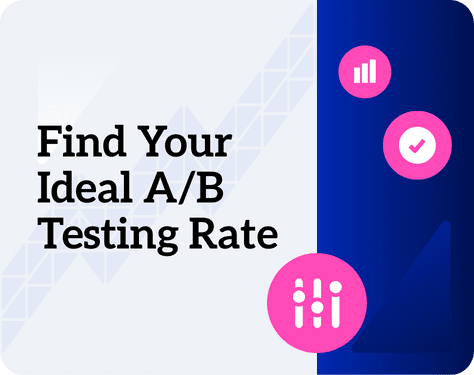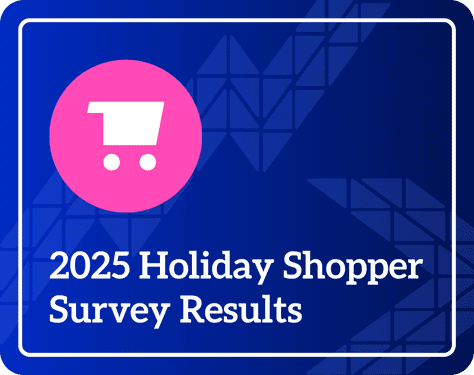Gen Z is changing personalization.
Shifting demographics means the way that organizations do personalizationOpens a new window now will be completely inadequate in the very near future.
Basic personalization doesn’t work anymore
Making small adjustments to a static, one-size-fits-all website and calling it personalization will no longer be enough. Brands will need to shift their way of thinking and doing business to satisfy the deeply personalized, instant expectations of the consumers and buyers of Gen Z.
Brands that have not started to prepare are in danger of getting left behind. The time to make an actionable plan and build a solid foundation to prepare for this next generation of buyers is today.
In this blog we’ll look at the forces reshaping the online landscape and what enterprises can do to make themselves relevant to a new audience. Learn how to evolve your marketing strategy to personalize for Gen Z.
A big change is coming
For online businesses that have half-heartedly implemented website personalizationOpens a new window, the industry-defining changes will come as a huge shock and potentially an existential threat.
There has been much discussion of how Gen Z consumes content, their shorter attention spans, and the speed with which they expect to get what they want.
But an even younger generation is now coming through.
For teenagers who have grown up in an algorithmic online environment of YouTube, Netflix, Instagram, etc., the idea of visiting a static website with hundreds of options to sift through is completely alien.
This new, young audience expects to have their motives and interests anticipated. They expect to be directed to the piece of content or product they want intuitively, and without facing hurdles along the way.
This expectation requires a thoroughgoing understanding of the customer at an individual level and the ability to translate this understanding into an extremely short, but still deeply immersive, customer experience.
In short: brands will need to reinvent how they do personalization for the next 2.5 billion shoppers with dynamic experiences.
In many cases, they will have to reinvent their internal processes and structures to make it work.
The new customer expectations of Gen Z
The new label for the generation below Gen Z is Generation Alpha, but this label applies to children born in 2010 or later.
We’re currently discussing a group of people who are older than this, already in their teens and, in some cases, early twenties, and fast becoming a significant buying power in the market.
The Pew Research Center defines Gen Z as being born between 1997 and 2012. Therefore, the oldest members of this cohort are currently in their mid-twenties, many who have completed their formal education and are out in the workforce.
But, what makes Gen Z so different when compared to Millennials?
Unlike with most Millennials, these young people in Gen Z have been immersed in a world of ultra-curated content since birth.
To label them digital natives or part of Gen Z would be accurate as far as it goes, but it would miss an important change that’s happening now.
We’re calling this group of people Gen Insta. There is a long-term trend toward faster access to content and services, shorter online attention spans, and an algorithm-driven online experience.
It’s already the case for Millennials and Gen Z, but as we look at even younger online audiences, the trend towards shorter, faster, and more curated experiences becomes even more exacerbated.
A smartphone-native generation
While the dramatic increase in mobile usage is well documented, it’s worth emphasizing just how dominant mobile is for this new generation and their access to the internet.
According to the Pew Research Center, 95% of US teens have access to a smartphone, up from 73% in 2014-2015. However, while smartphone usage has rocketed, other ways of getting online have stayed broadly the same.
And while a comparable percentage of Millennials are using smartphones, there are some important differences.
- Gen Z got their smartphones earlier in life – While the average age of a Millennial’s first smartphone was 17, the typical Gen Z-er Opens a new windowgets theirs when they are 12.
- On their phones more often – According to Common Sense Media’s 2019 census, Gen Z are on their phones an average of 7 hours and 22 minutes per day, compared to Millennials, who spend around 3.7 hours a day on their mobile devices according to TrueList.
This use of mobile as the dominant way of consuming online content has a big impact on the way this generation thinks and feels about digital experiences.
Mobile preferences include a smoother online journey, with:
- Fewer images – for example, single hero images replacing a carousel that the user scrolls through.
- More app usage – sites and platforms routinely encourage the use of apps to get online through mobile.
- Shorter journeys – The limited screen space available on mobile means less choice and a faster route to the product, service, or piece of content.
Teens and young adults expect a shorter, smoother, more predefined online experience.
A generation on different platforms
The New York times found that teens and young adults are spending more time on social media platforms like Snapchat, YouTube TikTok, and Instagram, compared with Millennials, who are more into Facebook (84% of MillennialsOpens a new window still use the platform every day).
And it’s not just social media. The New York Times found that younger Gen Z members are spending a lot of time on streaming platforms like Netflix and Hulu.
What this newer generation of social media and streaming platforms have in common is that they offer a highly curated experience that’s driven by algorithmic decisions on what to display.
How exactly these algorithms work is a closely guarded secret, but they all operate according to the same basic principle: surfacing content that will be of interest to users and hiding less relevant content.
When users are mostly accessing this content through apps and smartphones, the experience becomes even more curated, with a combination of automated decisions and clever design funneling users to relevant content extremely quickly.
Gen Insta has grown up in this environment.
They have radically different expectations of what their online experience should be compared to Millennials and even slightly older members of Gen Z.
How this personalization shift affects your business
These consumers of fast content already have spending power. In 2021, teenagers spent $63 billion in the US. As more members of this group start to move into their twenties and get jobs, their spending power will increase substantially.
The experience of online retail for this group of people is massively out of sync with their experiences elsewhere online.
To get an idea of how this shift in online consumption will affect retail, just imagine a teenager scrolling through their Instagram feed with a steady stream of tailored, deeply personalized content, then going over to Netflix to be instantly met with a selection of shows they’re currently watching and movies featuring their favorite stars.
Now imagine this same teenager visiting an online fashion website, with hundreds of products on display, different menus and catalogs to navigate, and a series of choices to be made about size, color, and style.
This overwhelming choice creates a disconnect in the online experience for young shoppers.
Brands have currently fallen behind the trend. We need to run to catch up.
Currently, the whole digital shopping experience online is set up to cater to an older generation who are used to searching for what they want. They are prepared to spend time sifting through irrelevant products and categories.
But the new generation is not prepared to jump through the same hoops.
Online brands have their work cut out. It’s not a process that can be done quickly, but the need to act is urgent. The risks of getting left behind for brands that don’t act boldly and decisively are existential.
What the future of online shopping will look like
But the general contours of the new landscape are clear enough for brands to start creating a map and a plan for what needs to change.
Brands can no longer rely on traditional customer journeys through a one-size-fits-all site. What this new world will look like is as yet undecided.
The road that brands need to travel down to make themselves as relevant to new audiences as Hulu or TikTok is a long one.
The end product will be a result of trial, error, feedback, and learning along the way.
The way to appeal to younger customers is by creating dynamic experiences with automated personalizationOpens a new window to the ones that these shoppers experience elsewhere online.
The chart below outlines the differences between the traditional customer journey and that of the future. Where does your brand currently stand?
| The traditional customer journey | The customer journey of the future |
| – Multiple steps | – Instant gratification |
| – Lots of choice | – Directed to small selection of products |
| – Customers have to search for what they want |
– What customers want is delivered to them automatically |
| – Piecemeal personalization | – Intuitive understanding of the customers |
| – Broken up by irrelevant noise | – Unique and engaging from end-to-end |
The best time to start? Yesterday!
A dynamic, instant, and fully personalized experience is not something you can achieve overnight. It takes careful analysis, planning, and execution and is a process that may take years to perfect.
But that doesn’t mean you should feel daunted by the task ahead.
If anything, the urgency of the situation should spur you on to act.
For most brands, there is a lot of ground to make up if it wishes to remain relevant as the market shifts.
If you aren’t preparing now for this new shopper and customer journey that’s coming down the tracks, you will get left behind and ultimately become obsolete.
A stark warning can be found by looking at the fortunes of Bed Bath & Beyond. Their recent decline, precipitated by supply chain issues and debt burdens, has been well documented. But their failure to meet the eCommerce moment many years ago may have set them on their path to destruction.
Their ex-Chief Strategy Officer, Richard McMahon, has commented on their failure to react to changing online consumer habitsOpens a new window over 10 years ago.
Speaking to the New York Times, Mr. McMahon diagnosed the root cause of the problem:
“There wasn’t as much focus put on the organic business — Bed Bath & Beyond — and evolving that business to consumer behavior… The internet started to become real, and consumer behavior was changing through that process.”
No matter the size and scale, brands that ignore changing consumer preferences today do so at their peril.
Today, consumer demands are changing so fast that online businesses won’t have the luxury of a decade to play catch-up.
Those that are playing from behind have already lost the game.



